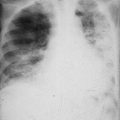and Karl Reinhard Aigner3
(1)
Department of Surgery, The University of Sydney, Mosman, NSW, Australia
(2)
The Royal Prince Alfred and Sydney Hospitals, Mosman, NSW, Australia
(3)
Department of Surgical Oncology, Medias Clinic Surgical Oncology, Burghausen, Germany
In this chapter, you will learn about:
Lump, ulcer, pain, bleeding, interference with tissue or organ function and unexpected weight loss
Symptoms of metastatic spread: lymph nodes, liver, lungs, bones, fat and muscles, bowel, brain and the “unknown primary” syndrome
A symptom is something that is reported or felt by a patient. A sign is something that can be observed, felt, measured or otherwise demonstrated by another person. Symptoms may result from two effects of a cancer: first, the local effects of the cancer itself; and second, the more general effects of the cancer as it affects the person’s body as a whole.
Usually, local effects are noticed first. The main local effects include one or more of the following – a lump; an ulcer that does not heal; a persistent cough possibly with blood stained sputum; persistent local pain; abnormal bleeding from the stomach, bowel, bladder, vagina or elsewhere; or interference with function of the organ or tissue involved. Such functional interference may be seen in obstruction of the bowel in the case of bowel cancer, persistent cough or interference with breathing in the case of lung cancer, difficulty with swallowing with oesophageal cancer or difficulty with passing urine in the case of prostate cancers. These symptoms of local trouble will thus depend upon the site of the cancer, the organ or tissue in which it started, the type of cancer cells that have developed. the size of the tumour, and the possible involvement of other organs or tissues near to the cancer.
The main general effects that may be noticed by a person with cancer are lassitude, malaise, fatigue and loss of energy, anorexia and weight loss. General symptoms are usually related to advanced cancers and may result from damage to, or interference with, function of any organ or tissue involved, as well as the body’s reaction to the presence of cancer.
In Part 3, each of the above features will be mentioned in more detail in relation to various cancers, but some general features are outlined below.
4.1 Lump
A lump, swelling or tumour of some sort is present in virtually every cancer, but the lump may or may not be noticed by the patient or be able to be felt by the doctor. The lump may be obvious if it is in the skin, head and neck (e.g. mouth or tongue), breast, lymph nodes or fat and muscles or bone (especially in an arm or leg). On the other hand, most lumps are non-malignant, but if a new lump is found anywhere in the body, it is important to determine what it is. The most common symptom of breast cancer, for example, is finding a lump in the breast. The lump is often felt whilst the patient is in the bath or shower, because most breast lumps are more easily felt with wet soapy fingers.
4.2 Ulcer
An ulcer in the skin that does not heal readily may be a cancer and should be examined carefully. Skin ulcers are usually noticed easily but ulcers in the mouth or throat may be less obvious, especially if they are painless. Any such ulcer may be of potential concern if it has been present for more than 2 or 3 weeks with no evidence of healing. However, it should be remembered that most long-standing ulcers are not malignant. Chronic ulcers may be caused by such conditions as varicose veins or poor arteries giving poor blood supply to the lower legs or by repeated trauma such as a jagged tooth, ill-fitting dentures or infections in the mouth. If there is any doubt about the origin of an ulcer, arrangements should be made to perform a biopsy. This involves taking a small piece of tissue, usually from the edge of the ulcer, and examining it microscopically to be sure exactly what cells are present and what sort of ulcer it is and what has caused it. In general, a small painless lump is more likely to be a cancer than a small painful lump.
If there is any doubt about the origin of an ulcer, arrangements should be made to perform a biopsy.
4.3 Pain
Most cancers are painless in their early stages. Pain may develop after a tumour has become big enough to invade or to press upon and damage surrounding tissues or nerves. In general, a small painless lump is more likely to be a cancer than a small painful lump, and people should not wait for pain to develop before seeking medical advice.
Stay updated, free articles. Join our Telegram channel

Full access? Get Clinical Tree






